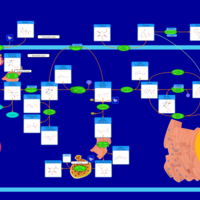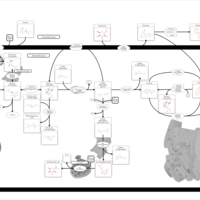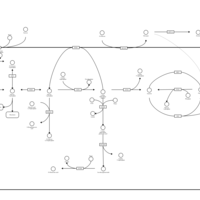| Starch and Sucrose Metabolism |    |
| Chlorothiazide Action Pathway |    |
| Polythiazide Action Pathway |    |
| Methyclothiazide Action Pathway |    |
| Bumetanide Action Pathway |    |
| Bendroflumethiazide Action Pathway |    |
| Quinethazone Action Pathway |    |
| Ethacrynic Acid Action Pathway |    |
| Hydrochlorothiazide Action Pathway |    |
| Cyclothiazide Action Pathway |    |
| Metolazone Action Pathway |    |
| Hydroflumethiazide Action Pathway |    |
| Indapamide Action Pathway |    |
| Furosemide Action Pathway |    |
| Torsemide Action Pathway |    |
| Trichlormethiazide Action Pathway |    |
| Chlorthalidone Action Pathway |    |
| Triamterene Action Pathway |    |
| Amiloride Action Pathway |    |
| Spironolactone Action Pathway |    |
| Eplerenone Action Pathway |    |
| Benazepril Action Pathway |    |
| Captopril Action Pathway |    |
| Cilazapril Action Pathway |    |
| Enalapril Action Pathway |    |
| Fosinopril Action Pathway |    |
| Lisinopril Action Pathway |    |
| Moexipril Action Pathway |    |
| Perindopril Action Pathway |    |
| Quinapril Action Pathway |    |
| Ramipril Action Pathway |    |
| Rescinnamine Action Pathway |    |
| Spirapril Action Pathway |    |
| Trandolapril Action Pathway |    |
| Candesartan Action Pathway |    |
| Eprosartan Action Pathway |    |
| Forasartan Action Pathway |    |
| Irbesartan Action Pathway |    |
| Losartan Action Pathway |    |
| Olmesartan Action Pathway |    |
| Telmisartan Action Pathway |    |
| Valsartan Action Pathway |    |
| Glucose Transporter Defect (SGLT2) |    |
| Hartnup Disorder |    |
| Iminoglycinuria |    |
| Lysinuric Protein Intolerance |    |
| Esomeprazole Action Pathway |    |
| Omeprazole Action Pathway |    |
| Lansoprazole Action Pathway |    |
| Pantoprazole Action Pathway |    |
| Rabeprazole Action Pathway |    |
| Ranitidine Action Pathway |    |
| Famotidine Action Pathway |    |
| Cimetidine Action Pathway |    |
| Nizatidine Action Pathway |    |
| Pirenzepine Action Pathway |    |
| Cyclophosphamide Action Pathway |    |
| Ifosfamide Action Pathway |    |
| Kidney Function |    |
| Glycogen synthetase deficiency |    |
| Glycogenosis, Type III. Cori disease, Debrancher glycogenosis |    |
| Glycogenosis, Type IV. Amylopectinosis, Anderson disease |    |
| Glycogenosis, Type VI. Hers disease |    |
| Mucopolysaccharidosis VI. Sly syndrome |    |
| Sucrase-isomaltase deficiency |    |
| Blue diaper syndrome |    |
| Lysinuric protein intolerance (LPI) |    |
| Angiotensin Metabolism |    |
| Gastric Acid Production |    |
| Benazepril Metabolism Pathway |    |
| Cilazapril Metabolism Pathway |    |
| Enalapril Metabolism Pathway |    |
| Fosinopril Metabolism Pathway |    |
| Moexipril Metabolism Pathway |    |
| Quinapril Metabolism Pathway |    |
| Ramipril Metabolism Pathway |    |
| Spirapril Metabolism Pathway |    |
| Trandolapril Metabolism Pathway |    |
| Cyclophosphamide Metabolism Pathway |    |
| Ifosfamide Metabolism Pathway |    |
| Cystinuria |    |
| Temocapril Action Pathway |    |
| Roxatidine acetate Action Pathway |    |
| Metiamide Action Pathway |    |
| Betazole Action Pathway |    |
| Lafutidine H2-Antihistamine Action |    |